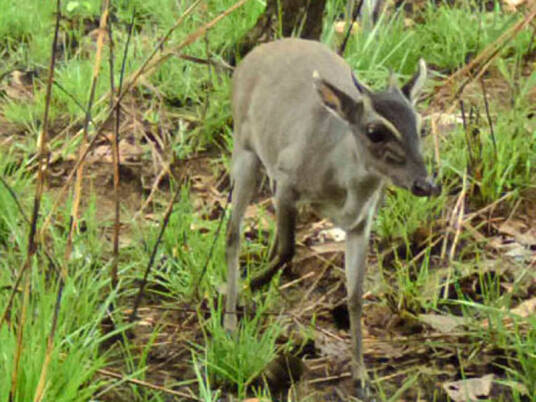Philantomba walteri
IUCN
LCBasic Information
Scientific classification
- name:Philantomba walteri
- Scientific Name:Philantomba walteri,Walter's Gazelle, Walter's Gazelle
- Outline:Ungulata
- Family:Artiodactyls Bovidae Muntjac
Vital signs
- length:About 50 cm
- Weight:4-6kg
- lifetime:No verification information
Feature
It is the only mammal to appear on the list of the top ten new species in 2011.
Distribution and Habitat
The Voltaic duiker has only been recorded as a specimen in the Dahomey Gap in the Guinea savannah, but no living animals have been recorded, and its habitat is thought to be various forms of scrubland within the region. The species is known from 40 specimens, including skulls and whole carcasses from bushmeat markets in Benin and Togo, and one from southern Nigeria. Its habitat includes the Dahomey Gap, the Upper Guinea Forest, and the Lower Guinea Forest, which are separated by an area of Guinea savannah.
Appearance
The Voltaic duiker is a very small antelope, no taller than 40 cm at the shoulder and weighing 4-6 kg. It belongs to the family of duikers. The Afrikaans name "duiker", meaning "diver", comes from the habit of these timid animals to dive into vegetation at little sign of danger. It is characterized by a slightly raised back, short legs, a small head and small round ears. They have a long tail and a distinctive and distinct stripe above the eyes. It is between the brown duiker and the smaller blue duiker in size, but is clearly different in morphology, skull structure and DNA analysis.
Details
Walter's Duiker (scientific name: Philantomba walteri), foreign name Walter's Duiker, no subspecies.

The Walter's duiker is a deer-like mammal and a new species of antelope that was first discovered in a bushmeat market in West Africa. The paper confirming the new species was published in the journal Zootaxa in 2010. The scientific name of the small antelope is "Philantomba walteri" (Walter's antelope), in honor of Belgian zoologist Walter Verheyen, who first discovered the species in Togo in 1968. The appearance of the new species surprised scientists because it belongs to a well-studied group of animals, but the scientific community had no idea of its existence. It is the only mammal to appear on the list of the top ten new species in 2011.
The Walter's antelope has similar living habits to its brown antelope. It has different areas in its territory for defecation, urination and sleeping. It lives mainly in pairs. However, in areas where territories overlap or are kept in enclosures, social interactions occasionally occur. It is nocturnal and is a shy and secretive small antelope that often hides in the forest. When startled, the duiker disappears into the underbrush. It feeds on leaves, shoots, seeds, fruit and bark.
The Walter's duiker has only been found in 41 recent specimens and no living population has been reported. Distribution has not been precisely delineated and there are no estimates of population size or trends. Therefore, the species is listed as Data Deficient.
Listed in the IUCN Red List of Threatened Species (IUCN) 2016 ver3.1 - Data Deficient (DD).
Protect wild animals and stop eating game.
Maintaining ecological balance is everyone's responsibility!








